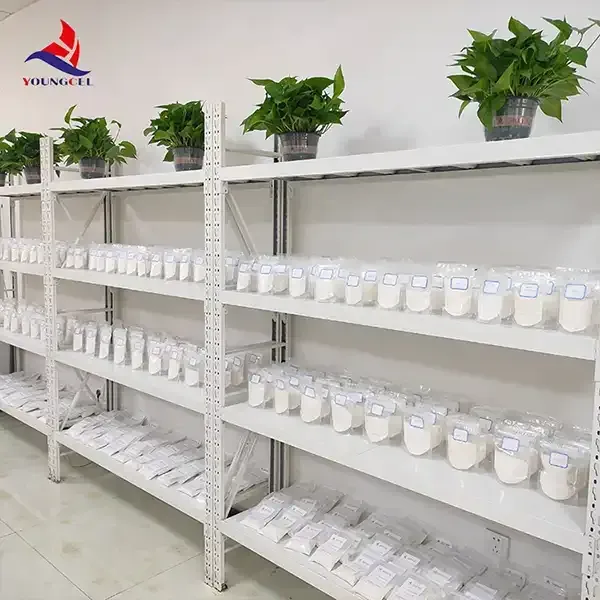HEC Cellulose An Overview of Its Properties and Applications
Hydroxyethyl cellulose (HEC) is a non-ionic cellulose ether derived from natural cellulose, a key polysaccharide found in plant cell walls. Through a process known as etherification, natural cellulose is chemically modified to produce HEC, characterized by the introduction of hydroxyethyl groups. This alteration not only enhances its solubility in water but also endows it with unique properties that make it highly valuable in various industries.
One of the defining features of HEC is its ability to dissolve in cold water, creating a clear, viscous solution. This property is due to the hydrophilic hydroxyethyl groups that improve the interaction between HEC molecules and water. Unlike some other cellulose derivatives, HEC does not gel upon cooling, which makes it particularly useful in applications where a stable viscosity is required across a range of temperatures.
HEC Cellulose An Overview of Its Properties and Applications
In the construction industry, HEC is valued for its role as a water-retaining agent in cement and plaster formulations. When mixed with water and other components, HEC helps maintain moisture levels, allowing for prolonged working times and improved adhesion. This quality is particularly important in hot or windy environments, where rapid evaporation can compromise the integrity of construction materials. Moreover, HEC contributes to the overall workability of the mixture, facilitating smoother application and finishing.
hec cellulose

The pharmaceutical sector also leverages HEC due to its biocompatibility and non-toxic nature. It is used as a binder and a film-coating agent in tablet formulations, enhancing the dissolution profile of active ingredients and improving drug delivery systems. Moreover, HEC is employed in ophthalmic solutions to enhance viscosity, providing extended residence time on the eye surface and improving therapeutic effects.
In the food industry, HEC acts as a thickening agent and stabilizer, contributing to the texture of sauces, dressings, and dairy products. Its ability to retain moisture is particularly beneficial in processed foods, helping maintain quality and extend shelf life.
Furthermore, HEC's biodegradable and environmentally friendly nature aligns well with the growing demand for sustainable materials. As industries seek to reduce their environmental impact, HEC offers a natural alternative to synthetic thickeners and stabilizers.
Despite its many advantages, the production and application of HEC are not without challenges. Variations in the degree of substitution (the number of hydroxyethyl groups attached) can lead to differences in solubility and viscosity, which must be carefully controlled during manufacturing. Additionally, the sourcing of high-quality natural cellulose is crucial to ensure the purity and performance of HEC.
In conclusion, hydroxyethyl cellulose is a versatile and valuable cellulose derivative with a wide range of applications across multiple industries. Its unique properties, including solubility, thickening ability, and biocompatibility, make it an essential ingredient in personal care, pharmaceuticals, construction, and food products. As the demand for sustainable and efficient materials continues to grow, HEC is poised to play a significant role in meeting these needs while contributing to environmental sustainability. The ongoing research and development in cellulose derivatives also suggest that there may be further advancements in HEC applications, potentially unveiling new markets and opportunities in the future.
-
Premium Detergent Grade HPMC Hydroxypropyl Methylcellulose: Superior Thickening & StabilityNewsAug.31,2025
-
HEC 100000 Hydroxyethylcellulose for Paint | Superior ThickeningNewsAug.30,2025
-
Wall Putty Rdp Powder Packaging DesignNewsAug.29,2025
-
Introduction to Hpmc Hydroxypropyl Methyl CellulosNewsAug.29,2025
-
Hpmc Industri Grade IntegrationNewsAug.29,2025
-
How to Choose the Right Construction AdhesiveNewsAug.29,2025




